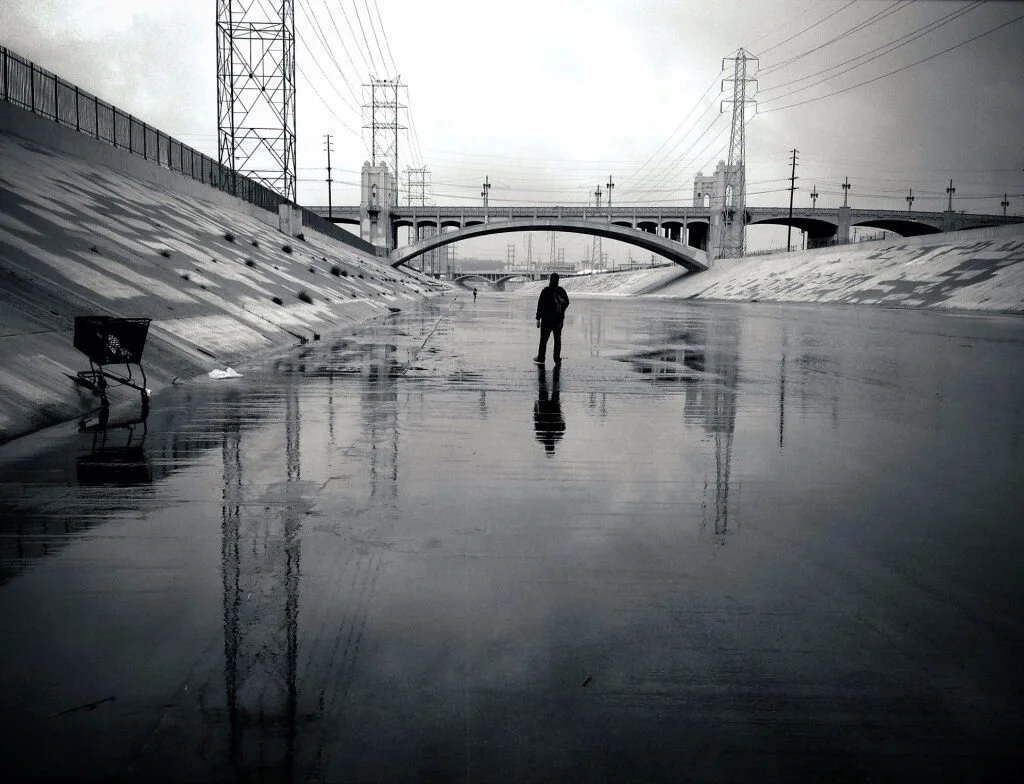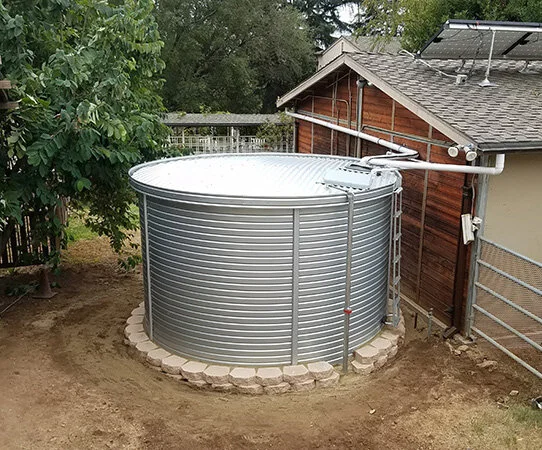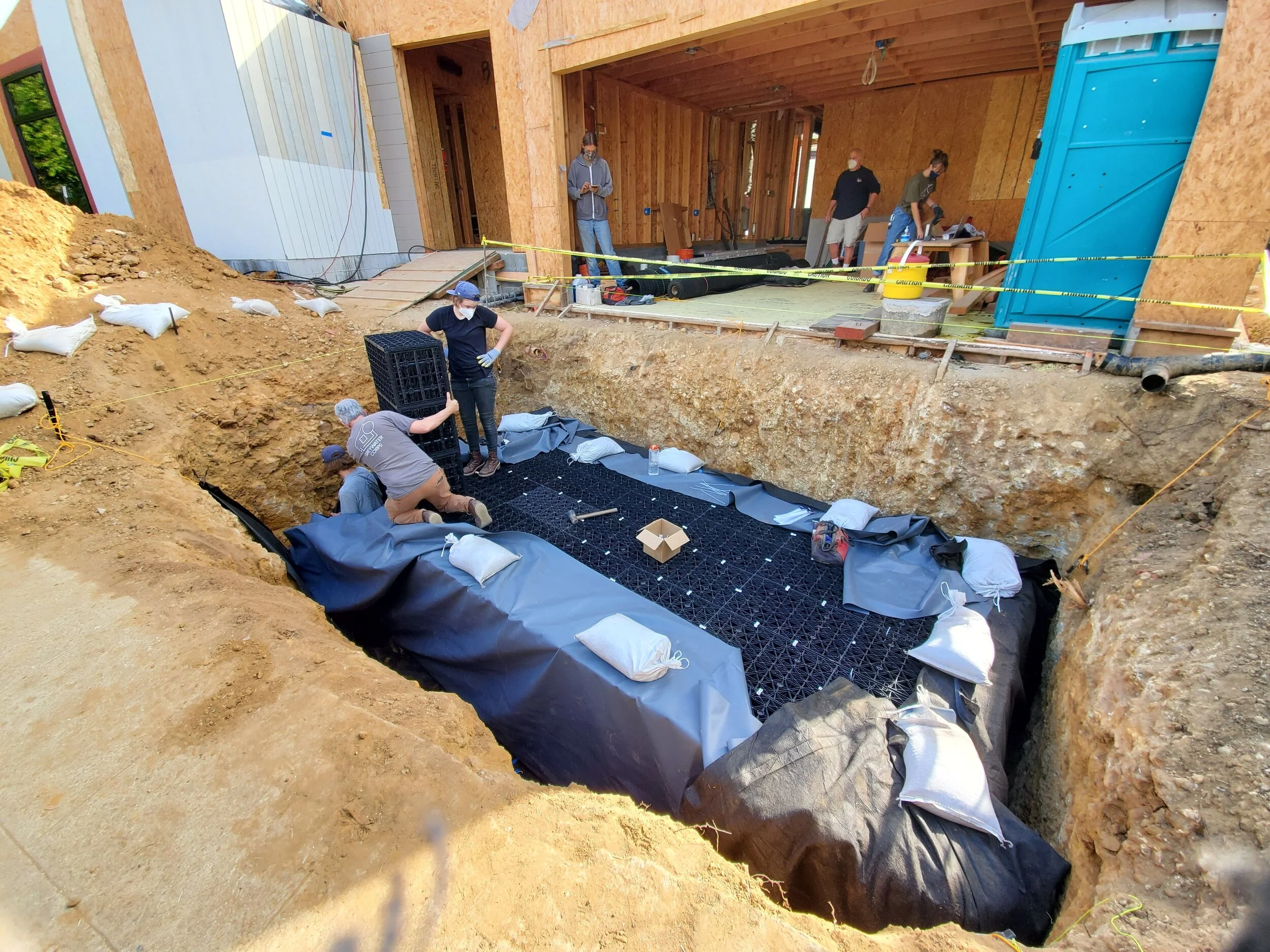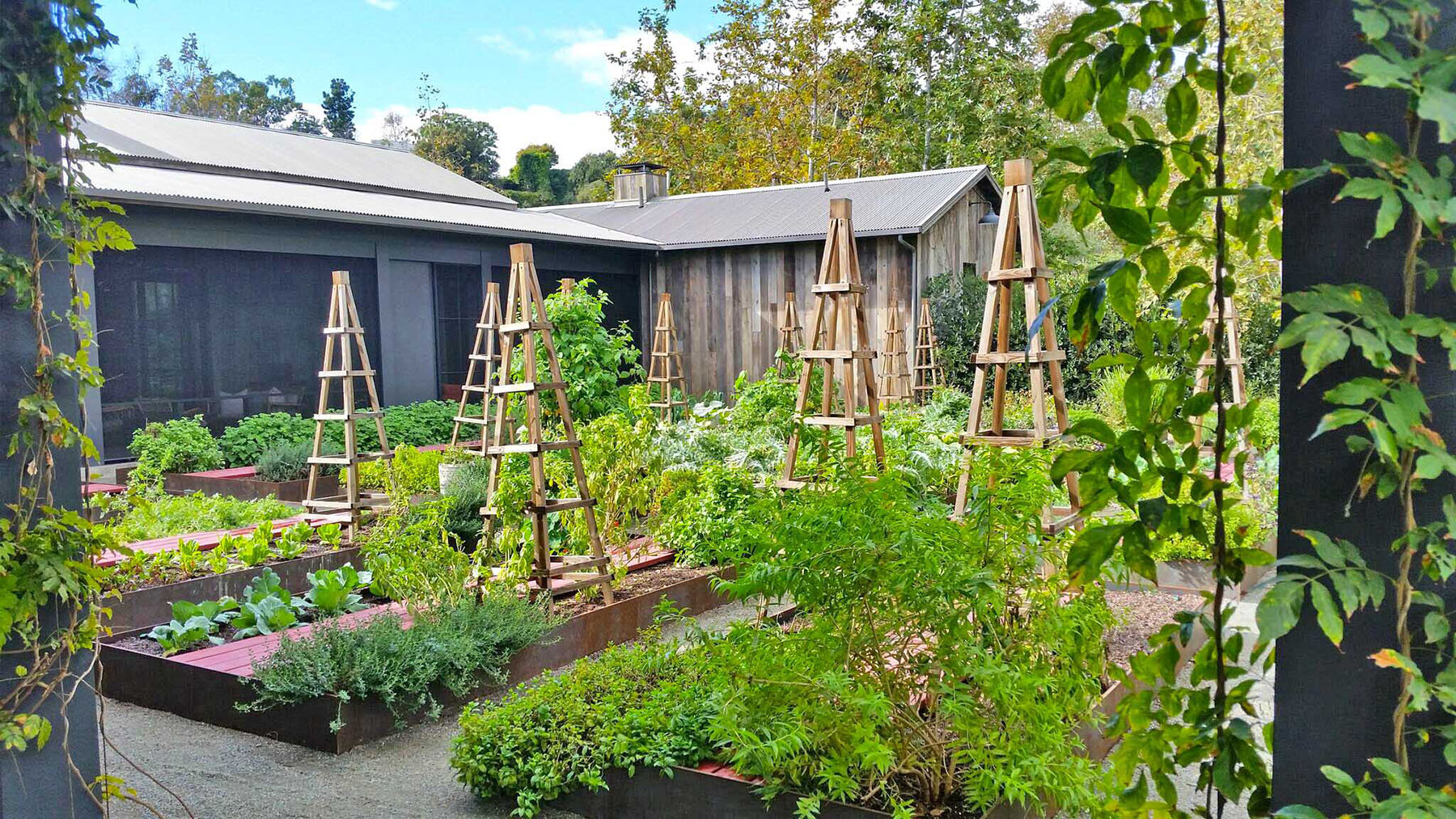
Rainwater
Rainwater harvesting systems capture pure water from roofs or other impermeable surfaces to be stored for beneficial use at a later time.
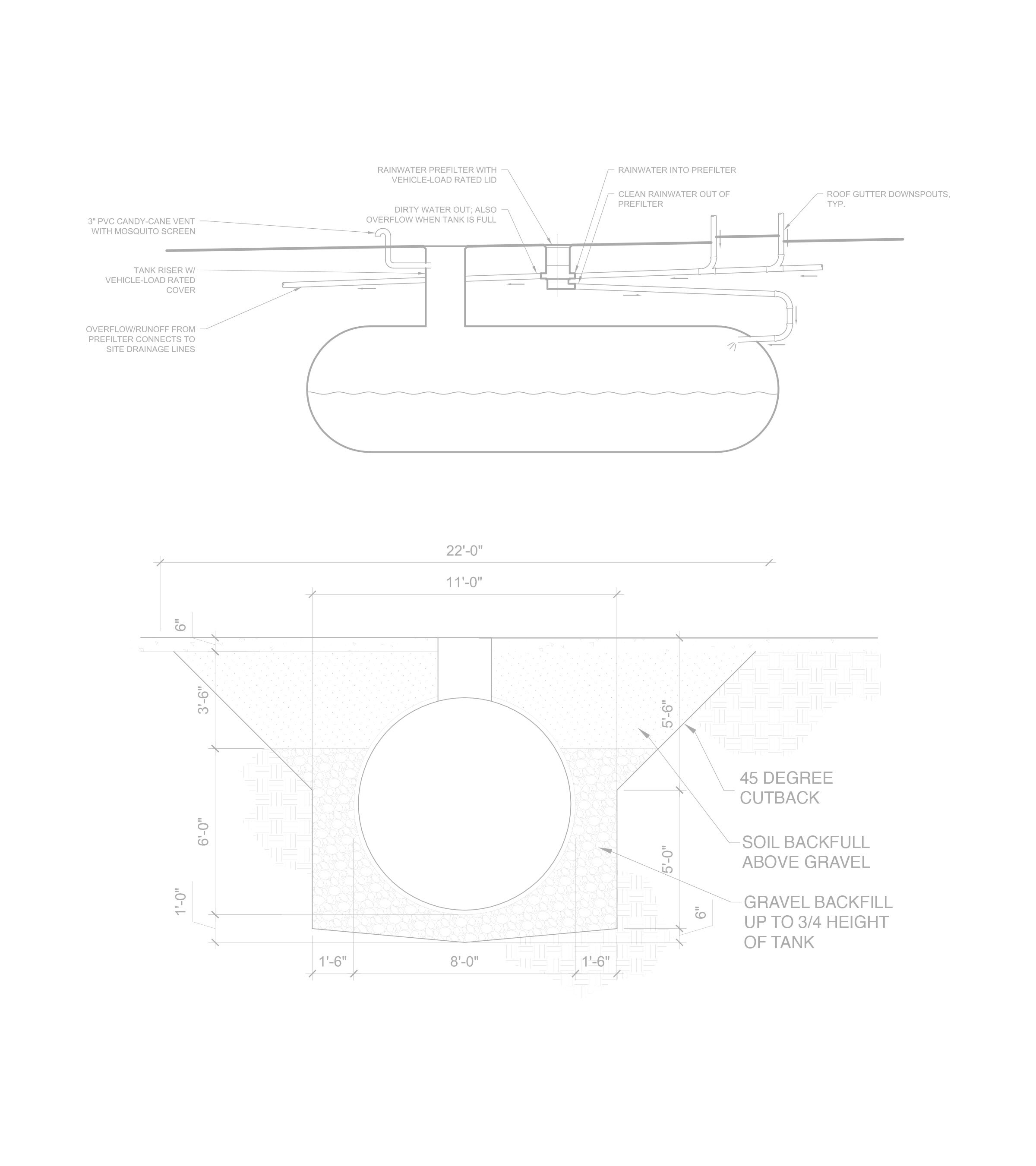
Why harvest rainwater?
Rainwater is great for all sorts of plants, including drought-tolerant native plants and vegetable gardens that are not always well-suited for greywater irrigation. Harvesting rainwater creates a resilient community - it can be used for firefighting and emergency water (think earthquakes or other disasters). These systems also satisfy Low Impact Development requirements for new construction.
Closing the loop
Two of the defining infrastructures of Southern California are the aqueduct system that imports water hundreds of miles to thirsty LA, and the concrete-lined LA River that moves our rainwater out to the ocean as quickly as possible. Harvesting rainwater closes this loop. It reduces our dependence on imported water and lessens runoff & pollution to the ocean. It teaches our children about the water cycle, and about sustainability and stewardship of this corner of the earth.
The Los Angeles River.
The California Aqueduct.
4500 gallon rainwater system at KX Lab in downtown Los Angeles.
You’re gonna need a bigger tank
It doesn’t rain often here, but when it does you can get a lot of water! A small roof surface, 1000 square feet, will generate 600 gallons with 1” of rain – and LA gets around 15” of rain a year. The challenge is that you need a place to store it. For this reason the residential systems we install are generally 500 to 3000 gallons and up.
Rainwater Calculator

Storage Options
Tanks can be directly under downspouts, or they can be located remotely from the house by using a “wet- pipe” system. Smaller tanks are usually plastic, larger tanks can be metal or concrete. Underground cisterns are more expensive, but don’t take up any real estate.
Small and Slimline Tanks
These storage systems are a great option on almost any Southern California urban lot due to the manageable size and shape of the storage tanks. These systems fill rapidly – one inch of rain on a small house yields 600 gallons of water.
Can fit in side yards and tight spaces
Great for vegetable gardens or emergency water
No permits or approvals required
Large Tanks
For sites with large catchment areas and ample space, larger tanks can be an effective tool for creating an alternative water source & self-reliant home.
A pump will usually be installed to provide effective water delivery to irrigation
1,000-5,000 gallon capacity
Underground Cisterns
Conserve ground space and create a protected, out-of- sight place to store captured rainwater. Underground cisterns are used at sites where space is limited but not minimal, and where catchment area and water needs are large.
Can provide a very large volume of usable water
Pumps are necessary to deliver water
Typically viable for new construction or open access sites only
Requires permitting and approvals
More challenging and expensive to install
Typically, large tanks (3,000- 20,000-gallon capacity)
Underground Modular Cisterns
Modular cisterns allow for large amounts of underground storage in tight or oddly shaped spaces. They consist of a series of “blocks” wrapped in PVC pond liner. They share many of the characteristics of their traditional counterparts.
Can provide a very large volume of usable water
Pumps are necessary to deliver water
Typically viable for new construction or open access sites only
Requires permitting and approvals
Typically, large tanks (3,000- 20,000-gallon capacity)
Water Delivery and Filtration
Rainwater can be simply gravity-fed through a hose bibb for local irrigation, or it can be pumped, filtered and purified for spray irrigation.
On-demand pumps can provide water pressure similar to municipal sources
Hand watering (garden hose) or subsurface irrigation (dripline) require little or no filtration
Water can be sterilized to levels safe for spray irrigation or indoor non-potable uses
Systems can be integrated into freshwater irrigation, watering with rainwater when tanks are full and automatically switching to municipal water during the summer.
Get your own system
Each project is unique, so we start with a phone call or email exchange to learn about your needs and discuss the best type of system for your situation. We are more than happy to talk about your options and find a system tailored to you.


